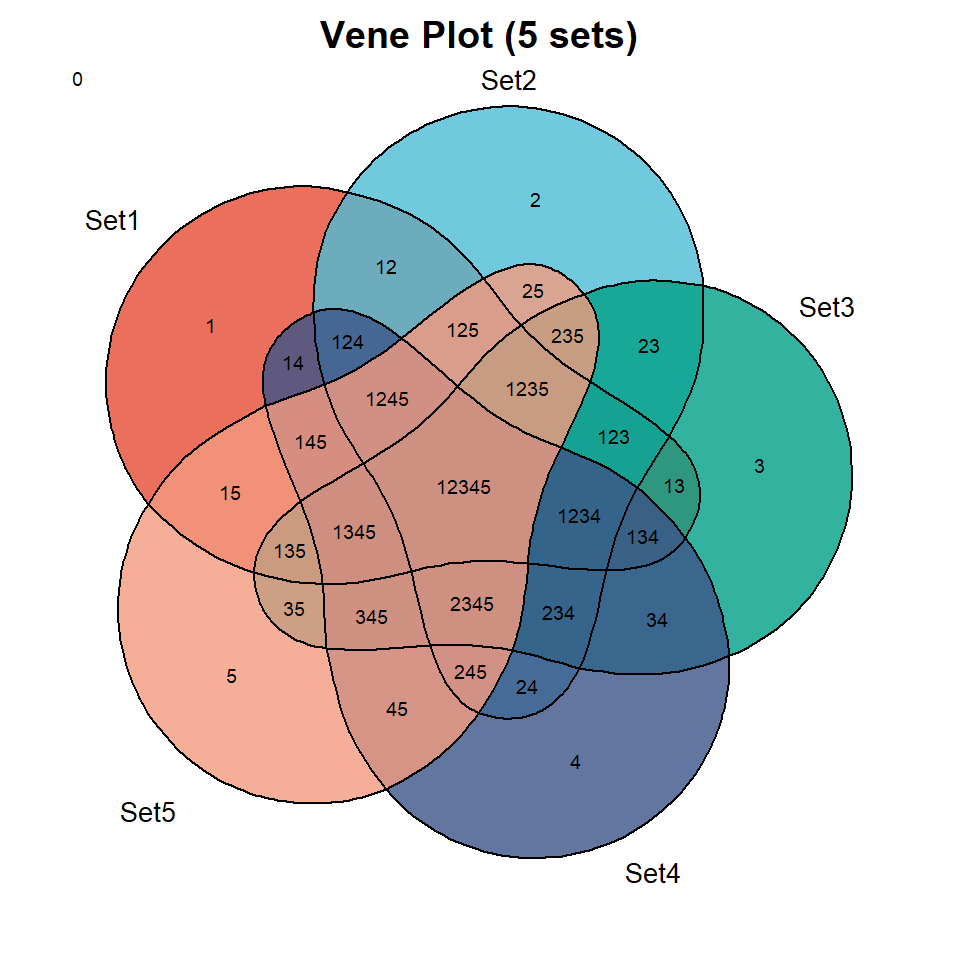# Install packages
if (!requireNamespace("venn", quietly = TRUE)) {
install.packages("venn")
}
# Load packages
library(venn)Venn2
Hiplot website
This page is the tutorial for source code version of the Hiplot Venn2 plugin. You can also use the Hiplot website to achieve no code ploting. For more information please see the following link:
A Venn diagram is a diagramthat shows all possible logical relations between a finite collection of different sets. These diagrams depict elements as points in the plane, and sets as regions inside closed curves. A Venn diagram consists of multiple overlapping closed curves, usually circles, each representing a set. The points inside a curve labelled S represent elements of the set S, while points outside the boundary represent elements not in the set S. This lends to easily read visualizations; for example, the set of all elements that are members of both sets Sand T, S ∩ T, is represented visually by the area of overlap of the regions S and T. In Venn diagrams the curves are overlapped in every possible way, showing all possible relations between the sets.
Setup
System Requirements: Cross-platform (Linux/MacOS/Windows)
Programming language: R
Dependent packages:
venn
Data Preparation
The loaded data is a collection of five gene names.
# Load data
data <- read.delim("files/Hiplot/179-venn2-data.txt", header = T)
# convert data structure
data_venn <- as.list(data)
data_venn <- lapply(data_venn, function(x) {
x[is.na(x)] <- ""
x <- x[x != ""]
return(x)
})
# View data
head(data) Set1 Set2 Set3 Set4 Set5
1 ISG15 HES5 DVL1 MATP6P1 FAM132A
2 TTLL10 AURKAIP1 ARHGEF16 MIR551A AGRN
3 HES4 LINC00982 OR4F16 C1orf222 WBP1LP6
4 OR4G4P FAM87B SKI MIR200B KLHL17
5 MND2P28 SKI WASH7P LINC00115 FAM41C
6 FAM87B GABRD MEGF6 ATAD3B PANK4Visualization
# Venn2
col <- c("#E64B35FF","#4DBBD5FF","#00A087FF","#3C5488FF","#F39B7FFF")
venn(x=data_venn, opacity=0.8, ggplot=F, ilabels = TRUE, zcolor=col, box=F)
title(main = "Vene Plot (5 sets)", line = -1)
The closed curve of 5 colors represents 5 sets, and the number represents the number of overlapping or non-overlapping genes in multiple sets. For example, 8 in the sample figure represents 8 identical gene names in 5 sample sets.
